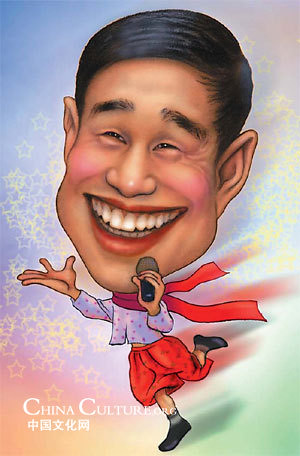| Home > China Feature |
Brief Introduction of Wushu (Chinese Gongfu)
Diversified Forms
Wushu is very rich in form and content, encompassing hundreds of styles and thousands of routines, each with its own distinctive features. Changquang (Long-Range Shadow Boxing) is characterized by speed and vigour, while taijiquan is noted for its slow and gentle movements. One category of wushu forms is called xiangxingquan, which portrays the movements and postures of various animals, as exemplified by houquan (Monkey's Shadow boxing) and tanglangquan (Mantis' Shadow Boxing). Then there is the humorous zuiquan that describes a drunkard who is "drunk in appearance but not in mind" and is sober enough to outwit his opponent.
Roughly speaking, wushu may also be divided into barehand exercises and exercises with weapons. There are a few dozen kinds of weapons employed in wushu exercises, mostly modelled on ancient types. Although the significance of their role in modern warfare has diminished since the invention of firearms, their value in wushu training remains to this day.
Nowadays wushu is practised in the form of pre-arranged routines, either by a single person fighting an imaginary foe, or by tow or more partners in a simulated combat -- barehand versus barehand, weapon versus weapon, and barehand versus weapon. There are also "free combats" in which a contestant is free to use all kinds of wushu techniques--kicks, blows, holds and throws-in order to knock down the opponent. To minimize injuries, rules are being worked out to govern this kind of contest.
Exercises for the Millions
The reason why the time-honoured art of wushu has taken deep root among the broad masses lies in its proven value in health-building. According to the philosophy of traditional Chinese medicine, wushu exercises consist of both "external" and "internal" work, the former meaning movements of the body, the hands and the feet and expressions of the eyes, and the latter being related to "the spirit, willpower, vital energy and strength." The two aspects are combined as movements are guided by consciousness so as to achieve "a unity of body and mind." Thus, constant practice of wushu helps not only to strengthen muscles and bones, but also to regulate the central nervous system and improve the cardiovascular, digestive and respiratory functions.
As wushu exercises are highly varied in intensity as well as in form, they offer an abundant choice to people differing in age, interest and health condition. Besides, one needs only a small space and very simple equipment for their performance. So wushu can be easily promoted as a participation sport. In recent years, coaching centres have mushroomed in cities and towns all over the country. Numerous people in poor health are reported to have benefited from constant practice. To add to its prestige, wushu is now used in many hospitals and sanatoriums as an effective therapy for chronic diseases.
As a performing art, wushu plays an important part in China's 360 kinds of local operas, which consist of four elements: singing, acting, dialogue and fighting. Many operas are featured by battle scenes with thrilling wushu movements. Wushu has also found its way into modern dance-dramas, lending them a strong national flavour and enriching the language of choreography. Kungfu films produced at home and abroad, which are full of wushu actions performed by Chinese masters, have a great appeal to cinema-goers.
Going far beyond China's boundaries, wushu has become increasingly popular in many parts of the world. The Japan Shorinji Kempo Organization, founded by the late master Doo-shin So after learning wushu at the Shaolin Monastery in China's Henan Province, boasts a membership of more than a million. The National Chinese Wushu Association of America, founded in 1978 has 4,000 members in 27 cities in the United States. In 1980, a six-nation kungfu league was formed by Sweden, Italy, France, Britain, West Germany and Spain. As the birthplace of wushu, China has in recent years sent her best masters on performance tours abroad and received group after group of foreign wushu enthusiasts coming on study missions.
Every nation has her fine cultural traditions to contribute to the treasure house of human civilization. It is most gratifying to note that Chinese wushu, as a common asset of mankind, is flourishing as never before for the well-being of the people.


Art
 more
moreChinese Traditional Art---- Paper...
Papercuts refer to handicrafts made by cuttingpaperwith sci...
Funny...ha-ha or peculiar?
Every culture has its own sense of humor. That's why Jim...

Let your fingers do
In Peking Opera, finger movements express different emotion...

Custom
 more
more



 print
print  email
email  Favorite
Favorite  Transtlate
Transtlate 
